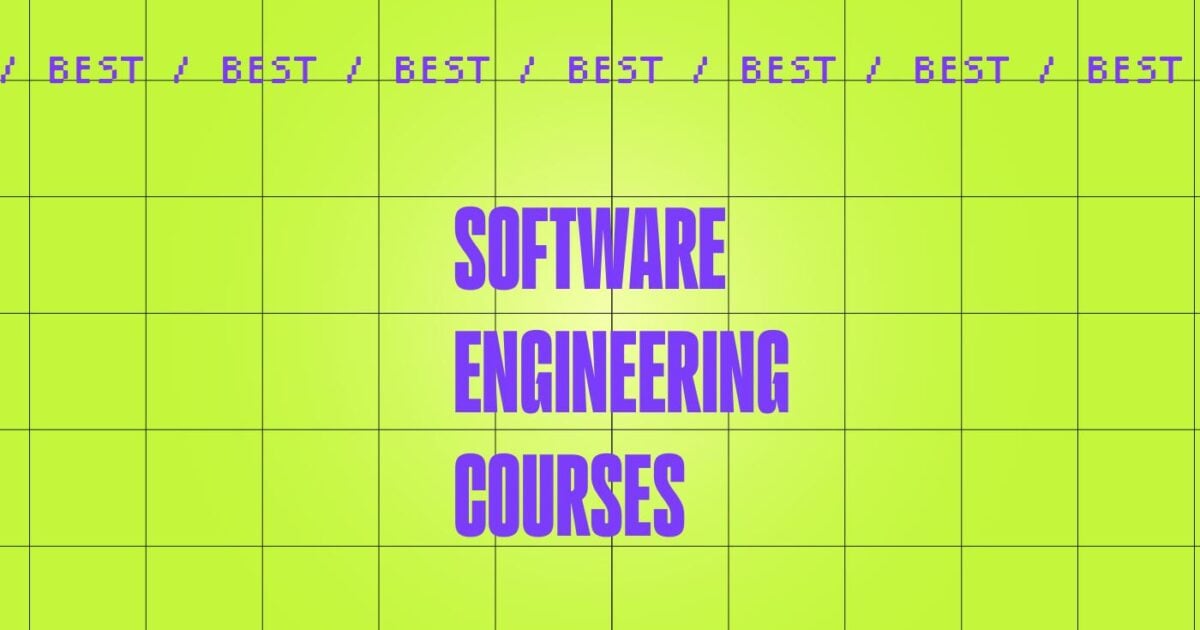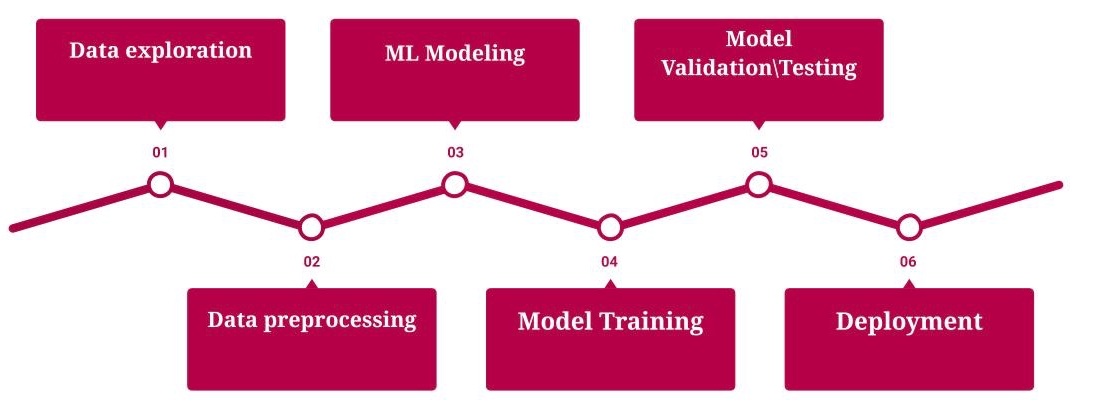All Categories
Featured
Table of Contents
- – Getting My Machine Learning & Ai Courses - Goo...
- – The Single Strategy To Use For Machine Learnin...
- – Software Engineering Vs Machine Learning (Upd...
- – 10 Easy Facts About What Do I Need To Learn A...
- – A Biased View of Machine Learning Course - L...
- – Everything about Fundamentals Of Machine Lea...
You most likely recognize Santiago from his Twitter. On Twitter, every day, he shares a whole lot of useful points concerning maker learning. Alexey: Before we go into our primary topic of relocating from software design to maker understanding, possibly we can begin with your background.
I started as a software application programmer. I went to college, obtained a computer technology level, and I began building software program. I think it was 2015 when I decided to choose a Master's in computer scientific research. At that time, I had no idea about artificial intelligence. I didn't have any kind of interest in it.
I recognize you've been using the term "transitioning from software program engineering to device knowing". I such as the term "adding to my ability the maker understanding skills" more due to the fact that I believe if you're a software designer, you are already providing a lot of value. By integrating machine discovering currently, you're enhancing the influence that you can have on the market.
Alexey: This comes back to one of your tweets or maybe it was from your training course when you compare two methods to learning. In this situation, it was some trouble from Kaggle about this Titanic dataset, and you just find out just how to resolve this trouble making use of a specific device, like choice trees from SciKit Learn.
Getting My Machine Learning & Ai Courses - Google Cloud Training To Work
You first discover math, or direct algebra, calculus. When you understand the mathematics, you go to equipment understanding theory and you discover the theory.
If I have an electric outlet here that I require changing, I don't intend to go to university, spend four years comprehending the math behind electricity and the physics and all of that, just to transform an outlet. I would instead begin with the outlet and find a YouTube video that helps me undergo the trouble.
Santiago: I really like the concept of beginning with an issue, attempting to toss out what I know up to that trouble and comprehend why it does not work. Get hold of the tools that I require to resolve that trouble and start digging much deeper and deeper and much deeper from that point on.
Alexey: Maybe we can speak a little bit regarding finding out sources. You pointed out in Kaggle there is an introduction tutorial, where you can obtain and discover how to make decision trees.
The only requirement for that program is that you understand a little bit of Python. If you go to my account, the tweet that's going to be on the top, the one that claims "pinned tweet".
The Single Strategy To Use For Machine Learning Bootcamp: Build An Ml Portfolio

Even if you're not a designer, you can begin with Python and function your means to more artificial intelligence. This roadmap is concentrated on Coursera, which is a platform that I actually, truly like. You can examine all of the courses free of charge or you can spend for the Coursera registration to obtain certifications if you wish to.
To make sure that's what I would certainly do. Alexey: This comes back to among your tweets or possibly it was from your course when you compare two strategies to knowing. One method is the trouble based approach, which you simply discussed. You discover a trouble. In this situation, it was some trouble from Kaggle regarding this Titanic dataset, and you just learn how to solve this problem using a specific device, like decision trees from SciKit Learn.

You initially find out mathematics, or direct algebra, calculus. When you know the mathematics, you go to machine learning theory and you learn the theory. Then four years later on, you finally pertain to applications, "Okay, exactly how do I use all these four years of mathematics to address this Titanic trouble?" Right? So in the previous, you kind of save on your own time, I think.
If I have an electrical outlet here that I require replacing, I don't desire to most likely to college, spend four years understanding the math behind power and the physics and all of that, just to alter an outlet. I prefer to start with the electrical outlet and discover a YouTube video that helps me experience the problem.
Santiago: I truly like the idea of beginning with an issue, trying to toss out what I understand up to that problem and recognize why it does not function. Get hold of the tools that I need to resolve that issue and start digging deeper and much deeper and deeper from that point on.
To make sure that's what I usually advise. Alexey: Perhaps we can speak a bit concerning finding out resources. You pointed out in Kaggle there is an intro tutorial, where you can get and find out just how to make decision trees. At the start, prior to we began this interview, you discussed a pair of publications.
Software Engineering Vs Machine Learning (Updated For ... for Beginners
The only requirement for that program is that you recognize a little bit of Python. If you go to my profile, the tweet that's going to be on the top, the one that states "pinned tweet".
Even if you're not a developer, you can start with Python and function your means to even more artificial intelligence. This roadmap is concentrated on Coursera, which is a platform that I really, truly like. You can investigate every one of the programs absolutely free or you can spend for the Coursera registration to get certifications if you want to.
10 Easy Facts About What Do I Need To Learn About Ai And Machine Learning As ... Shown
So that's what I would certainly do. Alexey: This returns to one of your tweets or maybe it was from your course when you contrast 2 approaches to knowing. One technique is the problem based approach, which you simply spoke about. You find an issue. In this instance, it was some problem from Kaggle regarding this Titanic dataset, and you simply discover just how to solve this problem using a particular device, like choice trees from SciKit Learn.

You initially learn mathematics, or linear algebra, calculus. When you understand the math, you go to machine learning concept and you find out the theory.
If I have an electric outlet below that I require replacing, I do not wish to go to university, invest 4 years understanding the mathematics behind electrical energy and the physics and all of that, just to alter an electrical outlet. I would certainly instead begin with the outlet and locate a YouTube video clip that helps me go via the problem.
Bad analogy. You get the concept? (27:22) Santiago: I truly like the idea of beginning with an issue, trying to throw away what I recognize up to that problem and understand why it doesn't work. Get the devices that I need to solve that trouble and start excavating deeper and deeper and much deeper from that factor on.
That's what I generally recommend. Alexey: Perhaps we can chat a bit concerning discovering sources. You stated in Kaggle there is an introduction tutorial, where you can get and learn exactly how to choose trees. At the start, before we began this interview, you stated a number of books also.
A Biased View of Machine Learning Course - Learn Ml Course Online
The only demand for that program is that you know a little bit of Python. If you go to my profile, the tweet that's going to be on the top, the one that claims "pinned tweet".
Even if you're not a designer, you can begin with Python and work your means to more artificial intelligence. This roadmap is concentrated on Coursera, which is a platform that I actually, truly like. You can audit every one of the courses completely free or you can spend for the Coursera registration to get certificates if you intend to.
That's what I would do. Alexey: This returns to among your tweets or perhaps it was from your training course when you contrast two strategies to learning. One technique is the issue based strategy, which you simply spoke about. You discover a trouble. In this case, it was some problem from Kaggle concerning this Titanic dataset, and you simply discover just how to solve this problem using a certain device, like decision trees from SciKit Learn.
You first find out mathematics, or direct algebra, calculus. When you recognize the mathematics, you go to maker knowing concept and you discover the theory.
Everything about Fundamentals Of Machine Learning For Software Engineers
If I have an electrical outlet below that I need replacing, I don't wish to go to college, spend four years understanding the mathematics behind electricity and the physics and all of that, just to change an electrical outlet. I prefer to begin with the outlet and find a YouTube video clip that assists me experience the issue.
Santiago: I really like the concept of starting with an issue, trying to throw out what I understand up to that trouble and recognize why it does not work. Get the tools that I require to solve that problem and begin digging much deeper and much deeper and deeper from that point on.

Alexey: Maybe we can chat a little bit concerning finding out sources. You discussed in Kaggle there is an intro tutorial, where you can obtain and discover exactly how to make decision trees.
The only requirement for that training course is that you know a bit of Python. If you're a programmer, that's a fantastic starting factor. (38:48) Santiago: If you're not a programmer, after that I do have a pin on my Twitter account. If you most likely to my profile, the tweet that's mosting likely to get on the top, the one that states "pinned tweet".
Even if you're not a designer, you can start with Python and function your way to even more machine knowing. This roadmap is focused on Coursera, which is a system that I really, truly like. You can examine all of the programs free of cost or you can pay for the Coursera registration to get certifications if you want to.
Table of Contents
- – Getting My Machine Learning & Ai Courses - Goo...
- – The Single Strategy To Use For Machine Learnin...
- – Software Engineering Vs Machine Learning (Upd...
- – 10 Easy Facts About What Do I Need To Learn A...
- – A Biased View of Machine Learning Course - L...
- – Everything about Fundamentals Of Machine Lea...
Latest Posts
Director Of Software Engineering – Common Interview Questions & Answers
The Best Websites For Practicing Data Science Interview Questions
How To Get Free Faang Interview Coaching & Mentorship
More
Latest Posts
Director Of Software Engineering – Common Interview Questions & Answers
The Best Websites For Practicing Data Science Interview Questions
How To Get Free Faang Interview Coaching & Mentorship